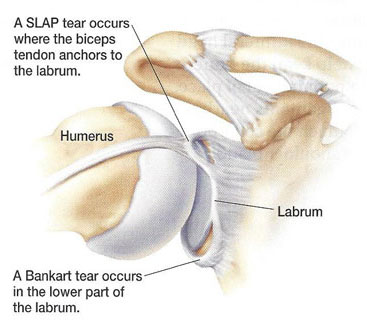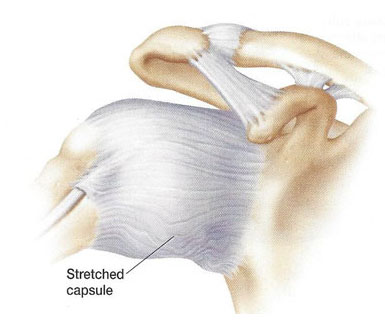An Unstable Shoulder:
The leading cause of instability is an injury that forces the humeral head out of its socket. If the humerus pushes completely out of the joint, it’s called dislocation. If it only pushes partway out, it’s called subluxation. These injuries can tear the labrum or stretch the capsule — or both. An injury can also result from repeated stress on the joint, especially in overhead athletes or people with loose joints.
Where Instability Occurs:
The Shoulder can become unstable in one of many directions. Most often, instability allows the humerus to move too far toward the front of the joint. This makes the shoulder feel unstable when you reach above and behind you. A loose capsule can sometimes cause instability no matter which direction the arm is moved.
A Torn Labrum
Many of the ligaments in the capsule attach to the labrum. So, if the humerus is forced out of place, these tissues can pull on the labrum and cause it to tear. Most often, tears occur in the lower part of the labrum (a “bankart tear”). They can also occur in the upper part (a “SLAP tear”). Once the labrum is torn, it’s much easier for the humerus to slip out of its socket.

A Stretched Capsule
Dislocation or subluxation of the shoulder joint stretches the capsule fibers that enclose the joint. The capsule can also be stretched by repetitive motions, such as throwing. Once the capsule is stretched, it remains loose. This can make the joint feel as if it’s slipping out of place.

